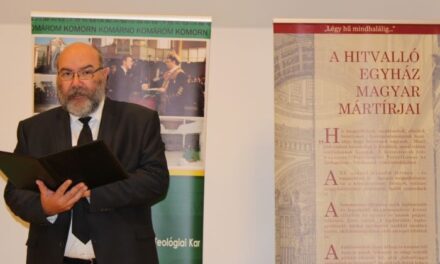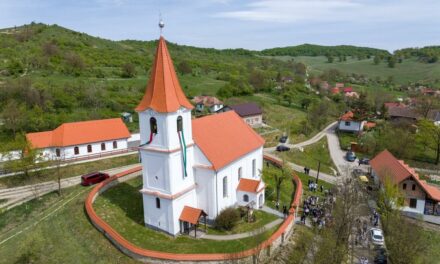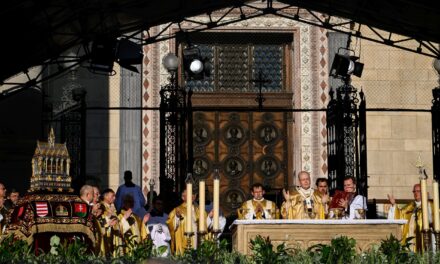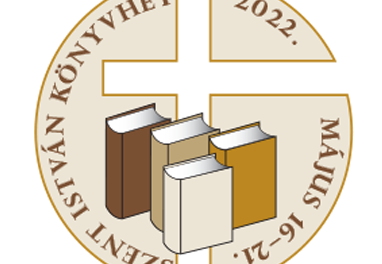On September 8, the Catholic Church celebrates the birthday of the Virgin Mary, whose Latin name is Nativitas Beatae Mariae Virginis. The Hungarian people regard the holiday as Kisboldogasszony, or the Day of the Virgin, which can be traced back to the 15th century. His cult developed in the area of historical Hungary during the Baroque period.
The Jerusalem tradition honored the place of Mary's birth next to the Baths of Bethesda. At the beginning of the 5th century, a church was built here in honor of St. Anna, on the anniversary of its consecration, on September 8, the birth of Mary was commemorated. Pope Sergius I probably introduced the holiday to the Western Church at the end of the 7th century, and then IV. Pope Ince added an eighth in the 13th century, which lived until 1955.
Mary's birth is not mentioned in the Bible, but there are rich apocryphal traditions that have been preserved in the codex literature.
In the legend of Anna from the 16th century Teleki Codex, it can be read:
"St. Anne's hour is coming, and she is born on a certain Tuesday of the week. In health, she gave birth to the royal offspring of the righteous David, the daughter he chose before the world, the sweet Virgin Mary. As they were taught as an angel, because she was the future illuminator and woman of this world and the star of the sea."
Our ancestors believed that this day marked the end of the "between two women" period, which lasts from August 15th to the day of the Blessed Virgin Mary. This time was considered a time of grace, and they lived and worked in such a way that the work done in these three weeks had a special blessing. They also prayed more fervently for a good marriage and the blessing of children, asking for the intercession of the Blessed Virgin. The women collected medicinal herbs for the Blessed Virgin to consecrate them. They began to prepare the seeds for the crop and the processing of flax and hemp.
According to folk observations, the storks start their journey during this period, and shortly after them, around the time of the Lady's Day, they gather, and then the swallows also start their journey. Therefore, in some regions, the holiday is called the Swallow-Driven Miss.
This day was also seen as the beginning of new things, so it was at this time that servants were hired and entered service. Since cleanliness was closely associated with the day of the Lady, bathing and bathing animals were also forbidden.
The Hungarians prepared for the holiday with pure spirit. That is why they visited the Marian shrines, where they had already left days before. To this day, Our Lady's Day is a popular farewell day, many churches, chapels, farewell processions and places of pilgrimage announce the liturgical celebration of the birth of the Virgin Mary.
In honor of the Stella puerpera Solis - "beautiful morning star", it was customary to keep vigil on the eve of the holiday and greet the Virgin Mary with the dawn, who is the dawn of the redemption of the whole world. In some places of pilgrimage, this beautiful custom is still alive today, when they pray outside while waiting for the sunrise and rejoice at the birth of Mary.
Our ancestors believed that whoever "deserves it" will see Mary lying in the cradle at sunrise.
The following can be read in Sándor Bálint's Holiday Calendar:
, a beautiful young lady
was born into this world from whose bosom
a noble lordship is budding.
Between the heavens and the heavens
Today there is joy,
The angels sing,
The music plays."
The childhood events of the Virgin Mary can also be found in apocryphal documents, works of the church fathers and legends. Joachim and Anna were elderly parents, "the adoring parents of the Virgin Mary", who "prayed" for their child and promised to consecrate him to God. According to the legend, when Mary was three or four years old, St. Anna, fulfilling her promise, gave her to the church to start serving the Lord. "When Mary was brought to the altar, she began to dance, so that all the house of Israel rejoiced with her and loved her." The birth and introduction of the Virgin Mary into the church inspired many painters over the centuries.
Source: Wikipedia, Magyar Kurír, velvidek.ma
Cover image: Nativity of the Mother of God, icon (Photo: Wikipedia)













